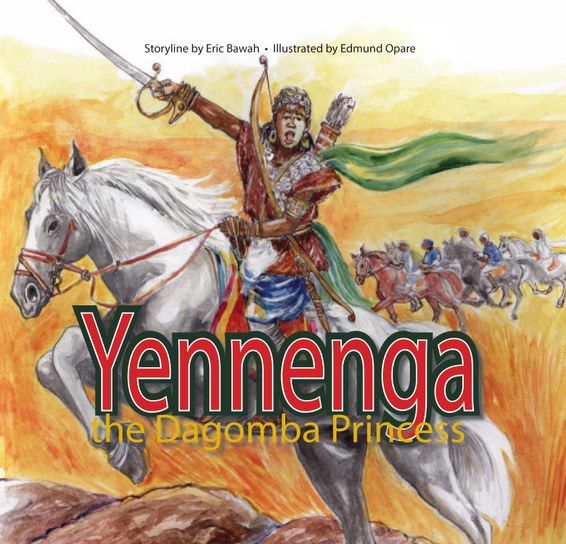YENENGA, The Dagomba Princess
 Yennenga, The Dagomba Princess
Yennenga, The Dagomba Princess
Picture Book / Biography / Dagomba / Ghana
Sub-Saharan
2015
Hardback

“Yennenga was very atheletic and she learnt to shoot arrows, and throw spears. She also learnt the art of horse riding. Her father gave her a special stallion called Ouedrago. At age fourteen she was a very skillful horse rider and an adept javelin thrower. Her father therefore took her to battles. She was a very good warrior! Her father became very proud of her and, in fact, made her a battalion commander. At fourteen years of age, Yennenga started helping her father in battles. Because of her skill in battle, her father refused to give her away in marriage. Yennenga loved fighting for her father in war but she also yearned to be a married woman and have children of her own. However, her father refused to give her away to any of the many suitors who sought her hand in marriage." Publisher
This book tells the story of the Dagomba people of Northern Ghana. A people whose story is often not told, thereby contributing to our understanding of the different kingdoms and dynasties spread across Ghana. The book does an excellent job of giving readers a glimpse into the everyday lives and gender roles within the Dagomba community. The book highlights the conflict that arises when gender norms are reversed. Here, we see Princess Yenenga’s excellence in archery being valued over her personal desire to marry and have a family. The disconnect between what she wants personally and what her father wants for her (to remain a fighter) leads to her personal resolve to escape from prison. Yennenga’s exile leads her to modern-day Burkina Faso and into the arms of her future husband. The story has a happy ending, with her return to her father and his acceptance of her and her new family. The story highlights the power of family and lineage and how power, conquest, passion and love lead to the spread of people across different geographic regions, yet still connected by love. The book is a very easy read for young readers, with easy to follow and short sentences. The pictures are beautifully illustrated, making it easy to see the geographic terrain, as well as the emotions of the people of their faces.
Reviewed by J. Jarpa Dawuni, Phd.D., Howard University
Published in Africa Access Review (February 16, 2019)
Copyright 2019 Africa Access
